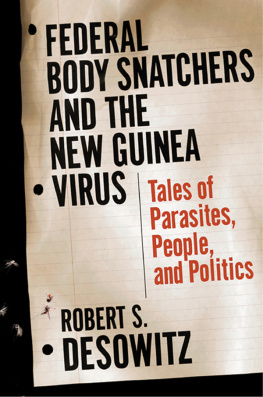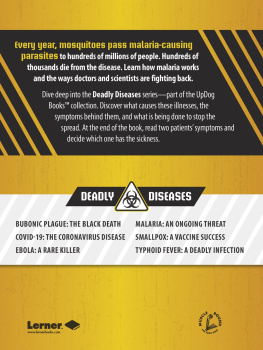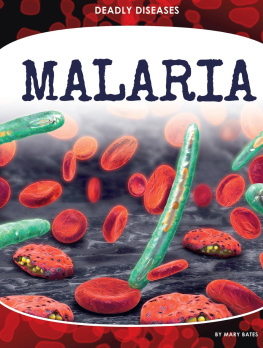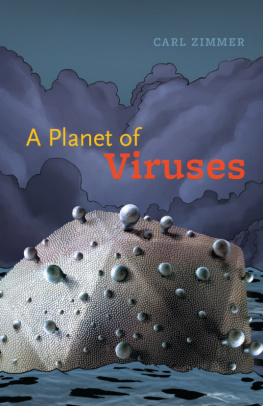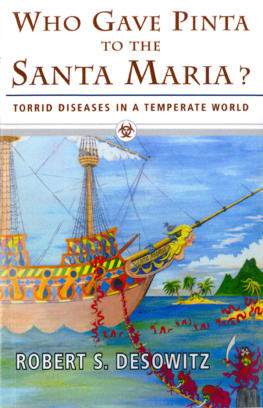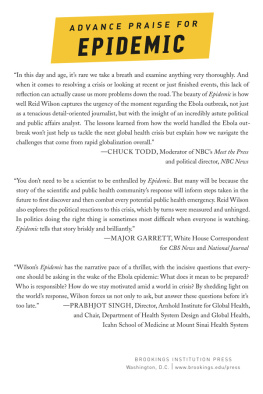
Copyright 2002 by Robert S. Desowitz
All rights reserved
First Edition
For information about permission to reproduce selections from this
book, write to Permissions, W. W. Norton & Company, Inc.,
500 Fifth Avenue, New York, NY 10110
Book design by Mary A. Wirth
Production manager: Amanda Morrison
THE LIBRARY OF CONGRESS HAS CATALOGED
THE PRINTED EDITION AS FOLLOWS:
Desowitz, Robert S.
Federal bodysnatchers and the new guinea virus : people, parasites,
politics / by Robert S. Desowitz.
p. cm.
Includes index.
ISBN 0-393-05185-4
1. Communicable diseasesPopular works. 2. Social medicinePopular
works. 3. EpidemiologyPopular works. I. Title.
RA643 .D47 2002
616.9dc21 2002071431
ISBN 978-0-393-32546-1
ISBN 978-0-393-29215-2 (e-book)
W. W. Norton & Company, Inc., 500 Fifth Avenue, New York, N.Y. 10110
www.wwnorton.com
W. W. Norton & Company Ltd., Castle House, 75/76 Wells Street,
London W1T 3QT

Federal
Bodysnatchers
and the
New Guinea Virus

I f emerging diseases had a sense of humor, they would be amused at being discovered like some lost tribe. Theyve always been there; only circumstance has newly brought them to the body and mind of their human associates. And so it is with the West Nile virus.
The human episode of the West Nile story began in 1937 in the West Nile District of northern Uganda. A killing sleeping sickness epidemic (trypanosomiasis) was then at its killing apogee and the Sleeping Sickness Service was screening natives for this tsetse fly-transmitted infection. One of those caught in the surveillance net was a thirty-seven-year-old woman from a village called Omogo. She did not test positive for the trypanosome but she did have a temperature of 100.6F and a blood sample was taken. The physician who examined her, Dr. A. W. Burke, noted rather testily that she refused to admit feeling ill, probably because she didnt want to be hospitalized. Her blood sample was, nevertheless, sent to the Yellow Fever Research Institute in Entebbe.
In 1937, yellow fever was still a power in the tropical world. It had retreated from the temperate zone where, for example, in 1793, it had killed a tenth or more of the population of Philadelphia. However, it remained entrenched in Africa and the tropical Americas. In Africa, yellow fever cut a wide swath from the west coast to central Africa and partially penetrated east Africa where it was transmitted to humans and monkeys by a variety of mosquitoes. The British had established the Yellow Fever Research Institute in order to be alert to any new viral intrusion into their east African colonies. Of course, in 1937, no one had actually seen a yellow fever virusor any other virus for that matter. They were too small to be seen by even the best optical microscopes and their visualization had to await the introduction of the electron microscope.
The viruses were unseen but not unknown. Filters of ceramic and colloidan membranes with porosities known to exclude even the smallest bacteria had been made since the time of Louis Pasteur. Filtrates were inoculated into experimental animals and, later, into tissue cell cultures. Any consequent pathogenic effects were observed. Passage of material from animal to animal, or culture to culture, with pathogenic effects at each subpassage confirmed that something living, very small, and infectious was present in the original filtrate; these filterable agents were given the term virus. By 1937, immunology had grown from its infancy at the turn of the century into a lusty teenager. Antibodies had been characterized and their specificity of action demonstrated. Serum antibodies had been collected from a spectrum of naturally infected humans and animals and experimentally infected animals. Some antibodies neutralized the virus in a filtrate or otherwise infectious material, that is, they killed them. Some immune sera would neutralize a filtrate/virus at a given dilution (titer) but either have no effect or only partially neutralize another filtrate/virus at that titer. From applying a collection, a library, of these different acting serum antibodies, it became apparent that not only were viruses of different sizes but also, like all other living things, they were of different kinds. They were of different species and could be taxonomically sorted into related groups. When researchers in Entebbe inoculated the serum filtrate from the slightly febrile but not demonstrably ill lady from Omogo directly into the brains of mice, all the mice died within five to ten days. The doomed mice first became hyperactive, then weak and sluggish, then lapsed into a coma and died. Indian rhesus monkeys inoculated with the virus-infected mouse brains exhibited similar signs of encephalitis and, invariably, died. But curiously, the African Cercopithecus monkeys developed only a mild fever and recovered naturally, like the lady from Omogo. Two of the Entebbe researchers carrying out these animal experiments developed, when their blood was tested, very high concentrations (titers) of neutralizing antibody. They obviously had become accidentally infected during the experiments but neither showed any signs or symptoms of disease, not even a transient low fever. Thus, early in the West Nile virus story it was realized that there were marked differences in pathogenicity between hosts; mice died, rhesus monkeys died, African monkeys survived, one human (an African) had a fever but would admit to no other symptoms; and two humans (British) were completely unaffected. It was a virus, but what kind and how was it transmitted in nature? Indeed, where was it in nature?
The Entebbe virologists had serum antibody reagents that specifically neutralized yellow fever, Japanese B encephalitis, St. Louis encephalitis, and louping ill disease viruses. The antibodies to yellow fever and St. Louis encephalitis virus had no neutralizing effect on the Omogo virus. Antibodies to Japanese B and louping ill viruses were partially lethal (neutralizing). From the clinical and laboratory findings, the Entebbe researchers, led by Dr. K. C. Smithburn, decided that it was a virus that had never been previously described and named it the West Nile virus. Its serological affinities to Japanese B and louping ill viruses, both known to be transmitted by blood-sucking arthropods (a mosquito and a tick, respectively), made them suspect that West Nile was also transmitted by a blood feeding, hematophagous, to use the term fancied by science, arthropod.
About thirty million years ago, a mosquito got trapped in the sap of a tree and became immortalized in amber. The exact coevolutionary timing is not known with any certainty, but when animals developed blood the bloodsuckers that fed on them appeared shortly thereafter. Then some opportunistic microbial pathogens figured out in the Darwinian way that those bloodsuckers were an efficient method of transport from one host feeding ground to another. The ancients suspected that some diseases were insect-transmitted, but proof had to await the discoveries that these infectious pathogensviruses, bacteria, fungi, protozoa, and helminthsactually existed. The first demonstration of arthropod transmission came in 1893 when T. Smith and F. L. Kilbourne showed that the organism causing Texas Red Water fever in cattle, a
Next page
